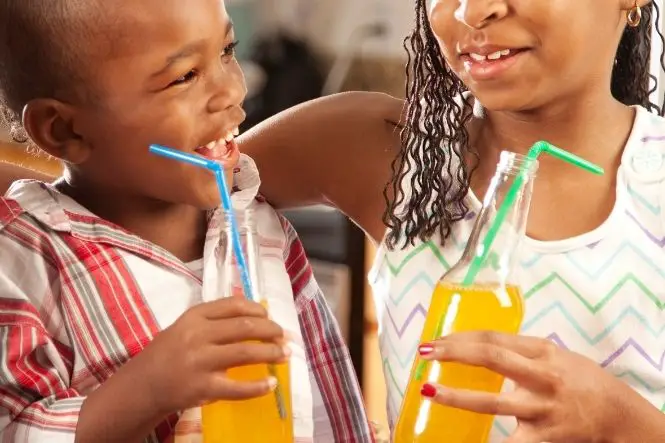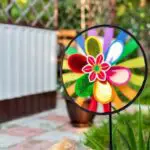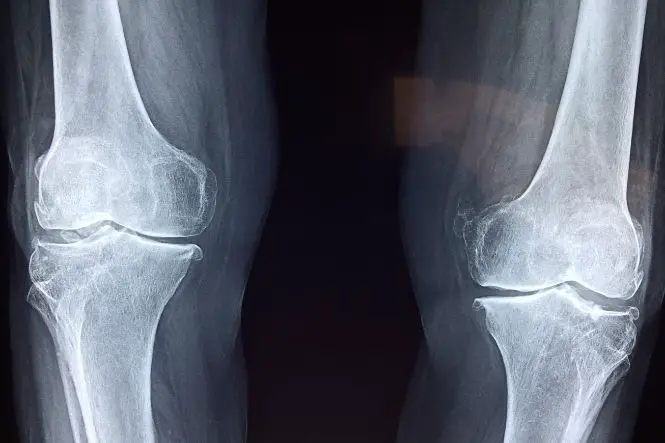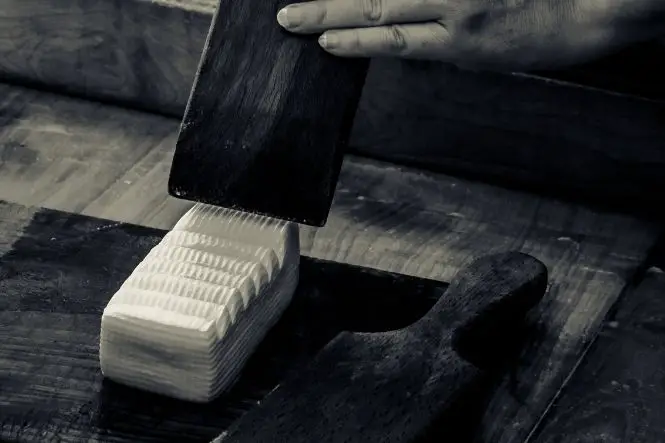Drinks are fizzy because they have carbon dioxide in them – the gas is forced into the drink at low temperatures and dissolves.
Homemade fizzy drinks can be made using a SodaStream – watch the bubbles of carbon dioxide from the cylinder go into the water or you could try adding soda water to some undiluted juice cordial.
When a fizzy drinks bottle lid is on, the carbon dioxide stays in solution because it is under a lot of pressure. This is why an unopened bottle of fizzy drink feels hard. When the lid is opened, the pressure is released and the bubbles fizz up to the surface and sometimes flood over.
Make a Fizzy Drink Fountain
A messy experiment – do it outside. Open a two-litre bottle of Diet Coke and put it on a flat surface. Make a cardboard tube the same size as the opening of the bottle, hold a thin piece of card underneath, and put a stack of sweets e.g. Mentos sweets or Smarties into the tube. Put the tube and card on top of the bottle, and gently pull the card away so that the sweets drop into the bottle (if the neck of the bottle is too small, carefully cut the sweets in half before putting them in the tube). Step away quickly!
Try it with different diet fizzy drinks (less sticky than non-diet versions) and non-fizzy drinks – does the sugar make any difference? What about fizzy water? Also try it with different sweets – does it still work? Which makes the highest fountain? Does it make a difference if the fizzy drink is straight out of the fridge or at room temperature? Try it with salt instead of the sweets – does this still work?
Bubbles in a drink form more easily if they have ‘nucleation sites’, which are places where it is easier for bubbles to form. The inside of a bottle of fizzy drink is very smooth and the bubbles don’t have many places to form, so the drink will stay fizzy for a while, even with the lid off. As the sweets dissolve, the surfaces get rough, creating lots of nucleation sites.
To see this happening, drop a raisin into a glass of clear fizzy drink and watch the bubbles form in the wrinkles of the raisin. Try the fountain with smooth, shiny sweets and rough, powdery sweets.
The ingredients in the sweets might also help. The sweets contain gum arabic and gelatine. These dissolve in the watery fizzy drink, and reduce the surface tension, which is what holds water molecules together at the surface of the liquid (see ‘Soap and Detergent Chemistry‘), or around the carbon dioxide bubbles. Reducing the surface tension makes it easier for the carbon dioxide bubbles to form, expand and escape. Washing up liquid also reduces surface tension (something that does this is called a ‘surfactant’). Does adding a drop of washing up liquid make the fountain any higher?
Make a Plastic Container Explode
Another messy experiment – again, do it outside. Fill a plastic lidded container three quarters full of fizzy drink, and lay a paper towel across the top, leaving a gap big enough for three of the sweets used for the soda fountain. Put the lid on. Tip the container so that the sweets slip into the drink, and quickly put the container on the floor and step away. The sweets should make the drink fizz – as the carbon dioxide expands, it should blow the lid off the container.






